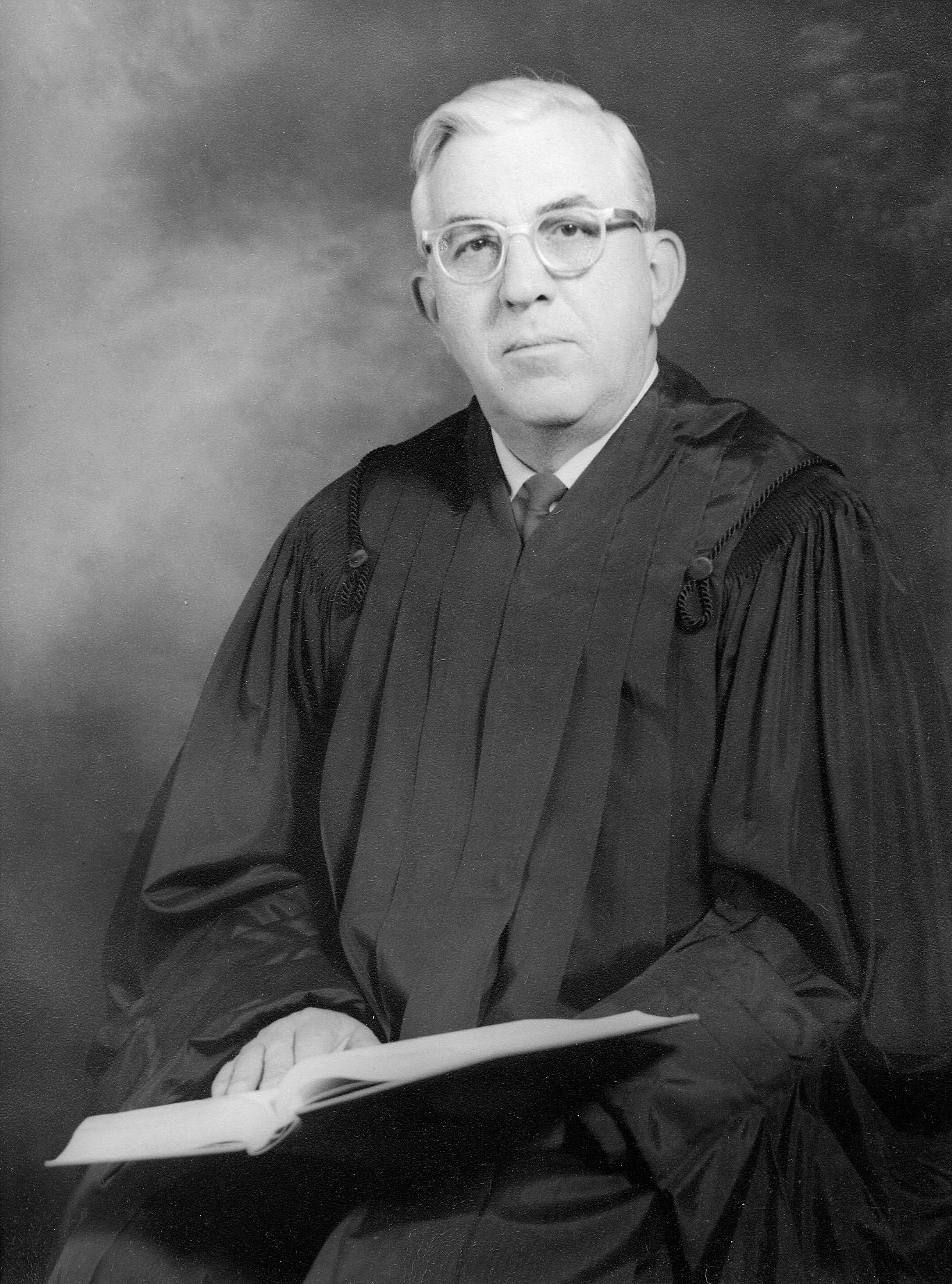Byron attended the public schools in Nashville and, in 1921, entered pre-law at the University of Illinois. He married Mildred Irene Holston, daughter of Benjamin B. and Irene (Watts) Holston, on June 9, 1925. In 1926, Byron graduated from law school, was admitted to the Illinois Bar, and began practicing law in Nashville with his father, establishing the firm of House & House.
Early in Byron’s career, he worked on cases delegated to him by his father and also did some abstract work. In the 1930s, during the time of the bank moratorium, Byron found his services in demand and his successful handling of the problems of many banks in the area established his reputation as an able lawyer. Those were the days of public works projects and, as cities became interested in water and sewer projects, Byron’s legal services were sought by surrounding towns. When the local oil boom began in the late 1930s and early 1940s, Byron did legal work for many major oil companies and independent operators. Still later, he worked to establish consolidated school districts, including the sale of unused rural schools and the construction of new schools. He became a recognized authority on school law.
In 1945, following the death of Byron’s father, Wilbert Hohlt joined Byron in the law firm and the firm’s name was changed to Hohlt & House.
That same year, Byron’s brother-in-law Ralph Maxwell, then state’s attorney and also member of the family law firm, was elected circuit judge. Byron was approached to fill the state’s attorney vacancy, a position that he held until 1947.
In 1955, Byron’s son James became an associate of the firm. The following year, Byron was appointed circuit judge for the Third Judicial Circuit and he withdrew from the family law firm.
In 1957, Byron was elected to the State Supreme Court to succeed his late brother-in-law, Ralph Maxwell, who had been elected to the Court in 1951 but had died on August 29, 1956. Byron was re-elected in June, 1960, served as chief justice during the 1959-1960 term, and remained on the Court until his death. He also served as a member of the President’s National Commission on Reform of Federal Criminal Laws.
Byron was a member of the First Presbyterian Church of Nashville, the Elks, and the I.O.O.F. He served on numerous local boards including the First National Bank of Nashville, Oakdale State Bank, Clarkson Manufacturing, Huegely Elevator and Nashville Gas Company.
Byron and Mildred had three children, James Byron (1927-2002), Marilyn Irene (1928-) and Dorothy Holston (1933-2000).
Byron died on his 67th birthday, September 27, 1969, and is buried in the House family plot in Greenwood Cemetery.
[by Lawrence E. House, II]
Byron attended the public schools in Nashville and, in 1921, entered pre-law at the University of Illinois. He married Mildred Irene Holston, daughter of Benjamin B. and Irene (Watts) Holston, on June 9, 1925. In 1926, Byron graduated from law school, was admitted to the Illinois Bar, and began practicing law in Nashville with his father, establishing the firm of House & House.
Early in Byron’s career, he worked on cases delegated to him by his father and also did some abstract work. In the 1930s, during the time of the bank moratorium, Byron found his services in demand and his successful handling of the problems of many banks in the area established his reputation as an able lawyer. Those were the days of public works projects and, as cities became interested in water and sewer projects, Byron’s legal services were sought by surrounding towns. When the local oil boom began in the late 1930s and early 1940s, Byron did legal work for many major oil companies and independent operators. Still later, he worked to establish consolidated school districts, including the sale of unused rural schools and the construction of new schools. He became a recognized authority on school law.
In 1945, following the death of Byron’s father, Wilbert Hohlt joined Byron in the law firm and the firm’s name was changed to Hohlt & House.
That same year, Byron’s brother-in-law Ralph Maxwell, then state’s attorney and also member of the family law firm, was elected circuit judge. Byron was approached to fill the state’s attorney vacancy, a position that he held until 1947.
In 1955, Byron’s son James became an associate of the firm. The following year, Byron was appointed circuit judge for the Third Judicial Circuit and he withdrew from the family law firm.
In 1957, Byron was elected to the State Supreme Court to succeed his late brother-in-law, Ralph Maxwell, who had been elected to the Court in 1951 but had died on August 29, 1956. Byron was re-elected in June, 1960, served as chief justice during the 1959-1960 term, and remained on the Court until his death. He also served as a member of the President’s National Commission on Reform of Federal Criminal Laws.
Byron was a member of the First Presbyterian Church of Nashville, the Elks, and the I.O.O.F. He served on numerous local boards including the First National Bank of Nashville, Oakdale State Bank, Clarkson Manufacturing, Huegely Elevator and Nashville Gas Company.
Byron and Mildred had three children, James Byron (1927-2002), Marilyn Irene (1928-) and Dorothy Holston (1933-2000).
Byron died on his 67th birthday, September 27, 1969, and is buried in the House family plot in Greenwood Cemetery.
[by Lawrence E. House, II]
Family Members
Sponsored by Ancestry
Advertisement
Explore more
Sponsored by Ancestry
Advertisement













